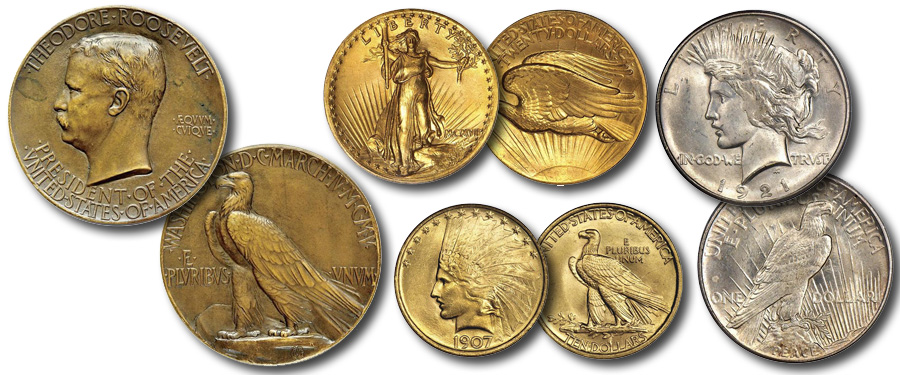
In 1905, Charles E. Barber created the ‘official’ inaugural medal for President Theodore Roosevelt. ‘Teddy’ had been president since September 1901, when as vice president he became heir to the highest office when William McKinley was assassinated (while attending an event at the Pan-American Exposition in Buffalo, New York). In 1904 he ran for election (seemingly, re-election isn’t appropriate, as he wasn’t elected president to begin with). He was successful. As usual, the Philadelphia Mint set about preparing an inaugural medal.
Barber’s design, which seems to be credible enough today, did not please Roosevelt, and he opted to go outside of the Mint. He tapped Augustus Saint-Gaudens, America’s famous sculptor, who was in residence at his studio in Cornish, New Hampshire (today a National Historic Site well worth visiting). At the same time, Roosevelt was engaged with the artist in having him redesign the cent and the four gold denominations, an honorarium of $5,000 being paid. Or, at least it seems to have been an honorarium, for the sculptor was very busy, probably would not have done such work commercially, and elected to do so only because of the presidential call.
Saint-Gaudens turned out his version of the medal, which wasn’t ready until well after the inauguration. Today, this is in the must have category for many medal collectors, with a nice example typically selling in the tens of thousands of dollars. On the obverse, the inscription at the bottom is in two lines curved together.
Roosevelt, satisfied with the work, then continued extensive correspondence with Saint-Gaudens, which led to the famous MCMVII (1907) double eagle. Somewhat similar to the work on the 1905 medal, the artist used the inscription arranged in two rows, both curved, one above the other.
In 1921 Anthony de Francisci, a former student of Saint-Gaudens, created the Peace silver dollar. For all appearances it was a tribute to Saint-Gaudens. The obverse portrait was a close copy of what had been used on the 1907 Indian Head $10 and the reverse a close stylistic copy of the reverse of the 1907 $20.
Such things are interesting to contemplate.





